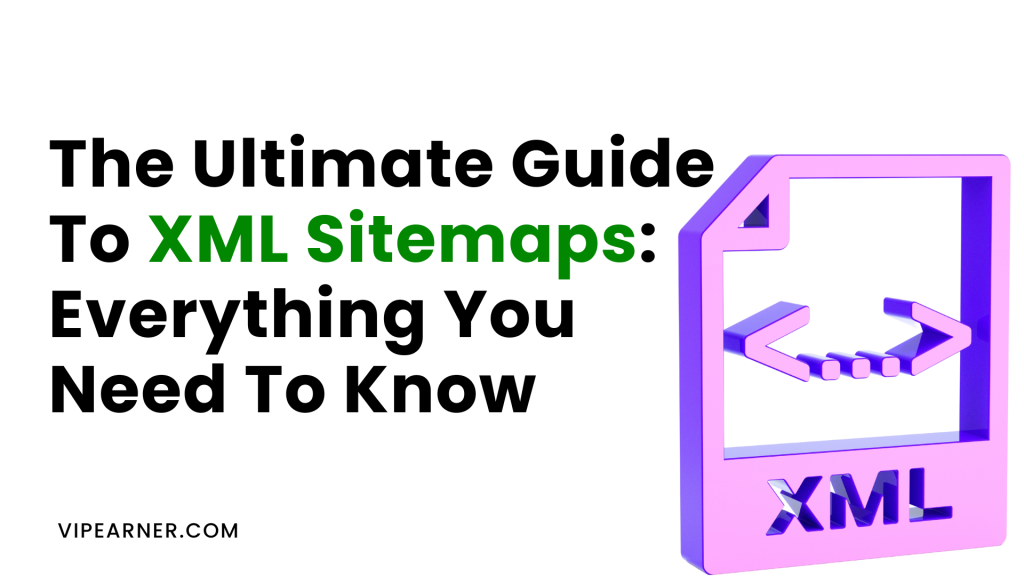AgentOps helps developers see inside their AI agents by logging every prompt, action, and cost. This review explains how it works, its features, setup, and why it’s becoming the go-to debugging tool for AI developers.
The Ultimate Guide To XML Sitemaps: Everything You Need To Know

XML sitemaps remain a cornerstone of effective SEO strategies, serving as critical navigational tools for search engines to discover, crawl, and index web content efficiently. As search algorithms grow more sophisticated and crawl budgets tighten, optimizing XML sitemaps has never been more vital for improving organic visibility.
This guide explores the technical foundations, strategic benefits, and advanced optimization techniques for XML sitemaps in 2025, equipping website owners and SEO professionals with actionable insights to enhance their search performance.
Introduction to XML Sitemaps
An XML sitemap is a structured file that lists all publicly accessible URLs on a website, accompanied by metadata such as modification dates, update frequencies, and priority levels. Unlike HTML sitemaps designed for human navigation, XML sitemaps cater exclusively to search engine crawlers, acting as a roadmap to streamline content discovery 1.
For modern SEO, these files are indispensable—especially for large, complex, or frequently updated websites—as they reduce reliance on internal linking structures and accelerate indexing for new or orphaned pages 7.
The evolution of search engine algorithms has amplified the importance of XML sitemaps. With Google’s 2024 Core Update prioritizing crawl efficiency, websites lacking optimized sitemaps risk delayed indexing and diminished visibility. For bloggers, e-commerce platforms, and news sites, a well-crafted XML sitemap ensures that critical pages receive priority crawling, directly impacting rankings and organic traffic 4.
Anatomy of an XML Sitemap
XML sitemaps adhere to a strict schema defined by the sitemaps.org protocol. The file begins with a root <urlset> tag encapsulating all entries, followed by individual <url> elements for each page. Key tags include:
<loc>: The canonical URL of the page (required).<lastmod>: The last modification date in W3C datetime format (e.g.,2025-03-10T21:46:00-04:00).<changefreq>: Estimated update frequency (e.g.,daily,monthly).<priority>: Relative importance on a 0.0–1.0 scale 9.
For large websites exceeding 50,000 URLs or 50MB uncompressed, a sitemap index file is mandatory. This parent file references multiple sub-sitemaps, enabling scalable management 2.
xml<?xml version="1.0" encoding="UTF-8"?>
<urlset xmlns="http://www.sitemaps.org/schemas/sitemap/0.9">
<url>
<loc>https://example.com/page1</loc>
<lastmod>2025-03-10</lastmod>
<changefreq>weekly</changefreq>
<priority>0.8</priority>
</url>
</urlset>
Specialized Sitemap Formats
Beyond standard URL listings, specialized sitemaps enhance visibility for multimedia and multilingual content:
- Image Sitemaps: Specify image URLs, captions, and licenses.
- Video Sitemaps: Include video duration, categories, and thumbnail URLs.
- News Sitemaps: Highlight time-sensitive articles for Google News.
- hreflang Sitemaps: Map language/regional variants of pages.
Strategic Benefits for SEO

XML sitemaps provide crucial strategic benefits for SEO by enhancing content discovery, optimizing crawl budget allocation, reducing indexing time for new content, and supporting specialized content types. These advantages help improve search engine visibility and facilitate efficient indexing, ultimately boosting a website's organic performance.
1. Accelerated Indexing of New Content
Search engines like Google prioritize sitemap-submitted URLs, reducing dependency on organic discovery through backlinks. For time-sensitive content—such as product launches or news articles—this can slash indexing delays from weeks to hours 5.
2. Crawl Budget Optimization
By excluding low-value pages (e.g., duplicate tags, filtered product lists) and highlighting priority content, XML sitemaps ensure crawlers allocate resources efficiently. This is critical for sites with over 10,000 pages, where wasted crawl budget can leave key pages unindexed 6.
3. Enhanced Indexation Monitoring
Submitting sitemaps via Google Search Console (GSC) provides granular insights into indexing status. Discrepancies between submitted and indexed URLs often reveal technical issues like crawl errors or noindex misconfigurations 3.
4. Support for JavaScript-Heavy and Orphaned Pages
Single-page applications (SPAs) and dynamically rendered content often evade traditional crawling. XML sitemaps ensure these pages remain discoverable, complementing client-side rendering strategies.
Advanced Optimization Techniques

XML sitemaps are structured files written in Extensible Markup Language (XML) that organize website URLs for search engines. They consist of key tags like <urlset>, <url>, <loc>, <lastmod>, <changefreq>, and <priority>, each providing specific metadata about a page. These components work together to help search engines understand a website’s structure and prioritize content for crawling and indexing.
Dynamic Sitemap Generation
Modern CMS platforms like WordPress and Shopify auto-generate sitemaps, but custom implementations offer finer control. Tools like Screaming Frog or DeepCrawl can generate sitemaps filtered by SEO criteria (e.g., excluding pagination pages or low-priority content).
Priority and Changefreq Tuning
While Google no longer uses <priority> and <changefreq> for ranking, these tags still guide crawlers. Assign higher priorities (0.8–1.0) to revenue-critical pages (e.g., product pages, blog posts) and adjust changefreq based on update cycles (e.g., daily for news sites).
Sitemap Segmentation
Divide sitemaps by content type or section (e.g., /blog-sitemap.xml, /product-sitemap.xml). This simplifies error debugging and allows targeted resubmission of updated sections 2.
Submitting and Validating Sitemaps
Submitting and validating XML sitemaps involves uploading them to search engines like Google Search Console and verifying their technical correctness. This process ensures that search engines can effectively crawl and index your website, while also identifying and fixing errors that might hinder indexing.
Submission Workflow
- Generate the Sitemap: Use plugins (Yoast SEO, All-in-One SEO) or enterprise tools (Sitebulb, Botify).
- Upload to Root Directory: Place
sitemap.xmlat the site’s root for automatic detection. - Submit via Search Console:
- Navigate to Crawl > Sitemaps in GSC.
- Enter the sitemap URL (e.g.,
https://example.com/sitemap.xml). - Monitor the Coverage Report for errors.
Validation and Error Resolution
Common sitemap errors include:
| Error Type | Cause | Fix |
|---|---|---|
| HTTP Errors | Incorrect protocol (HTTP vs. HTTPS) or missing www | Standardize URLs to match site settings. |
| Invalid Dates | Non-W3C formatted lastmod values | Use valid formats like YYYY-MM-DD. |
| Unescaped Characters | Ampersands (&) or quotes in URLs | Replace with & or %26. |
| Over-Sized Files | Exceeding 50MB/50,000 URLs | Split into smaller sitemaps and use an index file. |
Tools like XML-Sitemaps Validator and Screaming Frog automate error detection, while GSC’s URL Inspection Tool troubleshoots individual URLs 8.
Troubleshooting Common XML Sitemap Errors
XML sitemaps can encounter issues that hinder search engine crawling and indexing. Troubleshooting these errors involves identifying common problems such as invalid URLs, missing tags, incorrect namespaces, or exceeding size limits. By using tools like Google Search Console or online validators, you can detect and resolve errors to ensure your sitemap is properly formatted and fully functional.
1. Parsing Errors
Malformed XML syntax—such as unclosed tags or incorrect nesting—prevents search engines from processing sitemaps. Always validate files using tools like W3C XML Validator and ensure UTF-8 encoding.
2. Incorrect Namespace Declarations
The root <urlset> must include the correct namespace:
xml<urlset xmlns="http://www.sitemaps.org/schemas/sitemap/0.9">
Omitting this or using outdated schemas (e.g., 0.8) triggers validation failures.
3. Mixed Protocol URLs
Listing both HTTP and HTTPS URLs causes path mismatches. Ensure all <loc> entries match the site’s canonical protocol.
4. Blocked URLs in robots.txt

URLs disallowed by robots.txt or tagged noindex should be excluded from sitemaps to avoid conflicting signals.
Future-Proofing Sitemap Strategies
To ensure XML sitemaps remain effective as search engine algorithms evolve, adopting advanced strategies is essential. These include automating sitemap updates to reflect content changes dynamically, leveraging metadata like <lastmod> for timely indexing, and optimizing sitemaps for AI-driven search engines by focusing on topical clustering and user experience.
Additionally, segmenting sitemaps for large sites and integrating them with tools like Google Search Console helps maintain crawl efficiency and visibility in an ever-changing SEO landscape.
AI-Driven Crawling Adjustments
With Google’s increasing use of AI models like RankBrain, sitemaps may soon incorporate metadata for semantic relevance (e.g., topic clusters, entity relationships). Proactively structuring content around user intent can align with these advancements.
Integration with Core Web Vitals
Prioritizing URLs with strong LCP, FID, and CLS scores in sitemaps could signal quality to crawlers, though this remains speculative.
Automated Sitemap Maintenance
APIs like Google’s Indexing API enable real-time sitemap updates, ideal for frequently changing inventory (e.g., e-commerce). Coupled with CI/CD pipelines, this ensures sitemaps reflect live site content instantly.
Conclusion
XML sitemaps are far from relics—they are dynamic tools that bridge the gap between website complexity and search engine comprehension. By adhering to 2025 best practices—segmenting sitemaps, leveraging specialized formats, and rigorous error monitoring—websites can achieve faster indexing, efficient crawling, and sustained organic growth.
For bloggers and businesses aiming to "break free from corporate slavery" through digital income, a well-optimized sitemap is foundational. Tools like Yoast SEO and Google Search Console simplify implementation, while advanced strategies ensure scalability. As search ecosystems evolve, proactive sitemap management will remain a non-negotiable pillar of technical SEO.
Take Action Today: Audit your sitemap using Ubersuggest or Sitechecker, resolve errors, and submit it to search engines. Your future rankings—and revenue—depend on it.

